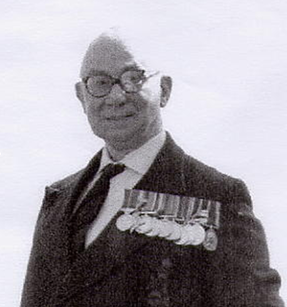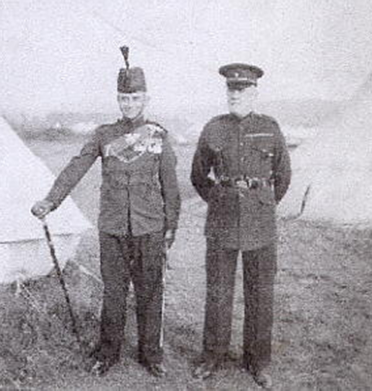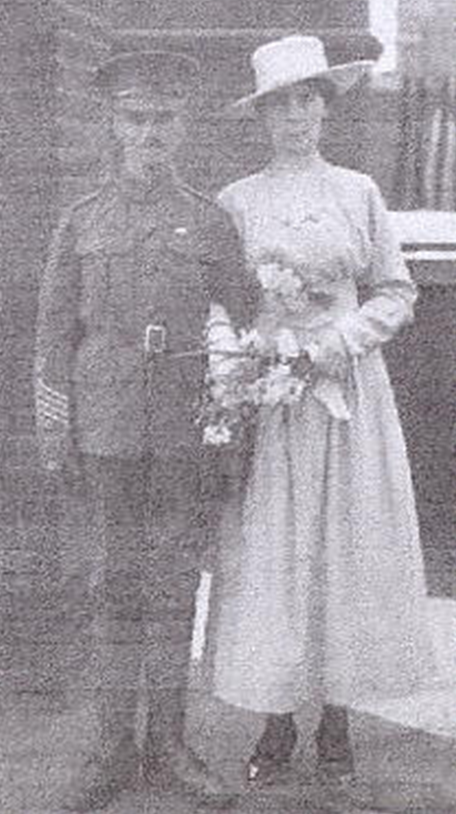2nd APRIL 1917.
Bombardment of Telegraph Hill commences. This hill is just in front of Arras which is the pivot of Hindenburg’s strategical retreat.
From this day up till 6th APRIL 1917.
Today, Good Friday, the enemy must have suffered hell judging by the stuff we have put over. On the 5th two German observation balloons were brought down by our airmen. This day turned out to be a beautiful day. All the morning we were going over our doings in peace time, just to try and cheer ourselves up.
We needed it for at 3 o'clock in the afternoon the Germans commenced to strafe us like hell, that’s the only word for it. We were in our dug-out, “Fagless Villa”, shells were dropping all round. We put our shrapnel helmets on and waited. Nearer and nearer they came and we crouched lower and lower. Presently there was a scream and a rush of hot air. We shut our eyes as the dug-out trembled under the explosion. A howitzer shell had dropped on the dug-out but luckily our home was strong enough to withstand it so that, with the exception of a blocked entrance and a severe shaking, we were alright.
I might mention this dug-out was part of an old barn being used as the Quartermaster’s Stores and it was hit by 9 different sized shells. This shelling continued for days and then the bounders put incendiary shells over and the whole village was alight in no time. Oh what a lovely war! Can you possibly imagine a village on fire, quite a miniature “Fire of London”.
A few more days elapsed during which time the Germans had retired something like 12 miles with our boys after them. This gave us a chance of liberating ourselves from the cellar or dug-out that had protected us so well.
Now to try and describe our village of Achicourt. Oh what a sight!, houses reduced to ashes, dead horses lying all over the road, motor lorries burnt and bent into all shapes, dead bodies, in fact things of all description littered our path. We helped to clear this place up during the following few days and then we marched to a place called Wanqueten. Here it was that the famous “Bugle Band of the Queen Victoria’s Rifles” did its last and best ‘Retreat’ at Sunset before it got smashed up. I think the ‘heads’ knew we were in for a rough time because the Brigadier ordered a posh ‘Retreat’ by all the bands of the Brigade. Each band doing a ½ hour’s show, the Q.V.R.’s appeared last and easily carried off the honours for the day in front of an audience of roughly 1,000.
From here we marched to the Infantry Barracks at Arras and, after sleeping there for the night, we went up to Wancourt, ammunition carrying.
We had been up there about five days when on the night of the 3rd MAY 1917 our boys were heavily pushed by the enemy and a big fight ensued. We had orders to man our bit of trench and, having got every order distributed, I returned to my little bit of a dug-out, (for N.C.O.’s), to get myself ready. I had finished and was sitting down thinking of home - it was 20 minutes to 10 at night when a German 5'9 Howitzer high explosive shell found us, wounding seven of the buglers. I got blown up and buried in the dug-out and I stayed there for 20 long minutes. Eventually they dug me out. Like a cheap jelly I was.
Having got our wounds done up we started in a pitiful line for the dressing station. From here we were told to go to the Wancourt Road and there we would find a horse ambulance. Off we went and just as we got to Wancourt a big “dump” went up and blew us some yards back again. Eventually we got the ambulance which took us to Tilloy. Here we were shelled again with gas shells. Leaving here in motor lorries, five in number, we made for Arras but, my word, what a journey we had - shelled all the way. At last we arrived at Arras dressing station and, having been fed, we got onto a Motor Bus and rode to a place where a small train took us to Frevent. From here we took a train to Boulogne and then by the Jan Breydel we sailed to Dover.
From Dover we caught a train to Bradford Military Hospital in Yorkshire and then, being much better after a few weeks in hospital, I went to Leeds. After a stay here I returned home for leave and then joined the Reserve Battalion at Deepcut, near Aldershot. I was marked (medically) B2 and remained there until I was discharged on the 25TH JANUARY 1919 with the rank of BUGLE MAJOR.
• the end.







